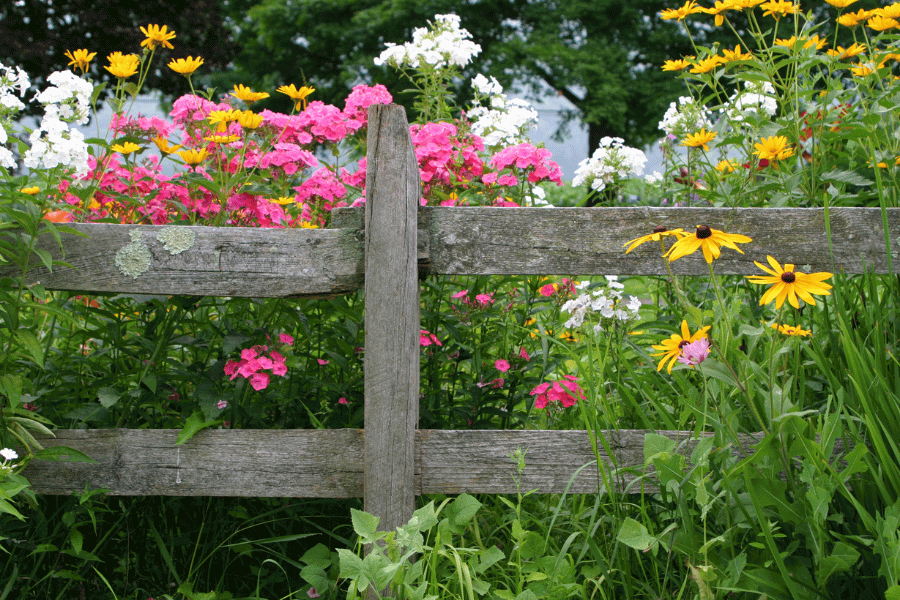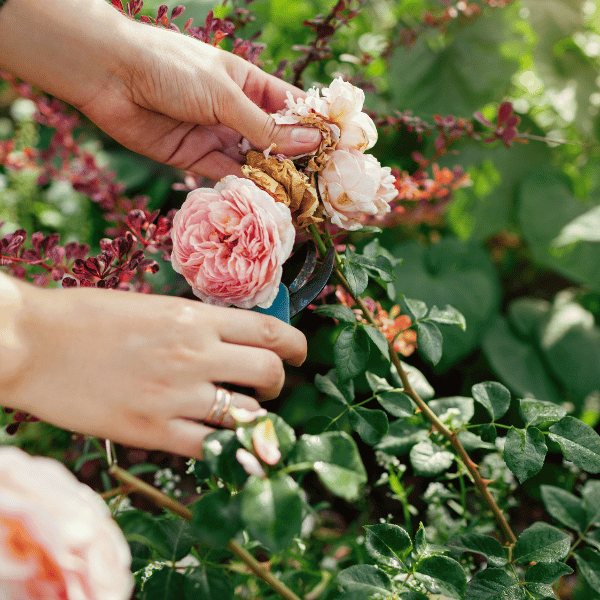Hydrangeas hold significant value in the landscape, making them a popular and cherished choice for gardens and outdoor spaces. Their versatility, stunning blooms, long flowering season, and various cultivars contribute to their immense appeal. This group of plants is so renowned, that even non-gardeners will recognize the blooms and beauty that these shrubs present. Every gardener and plant lover will have their own reasons for loving hydrangeas; we’ve compiled the traits that we feel make them blooming beautiful!
Aesthetic Beauty: One of the most apparent values of hydrangeas in the landscape is their sheer aesthetic beauty. With their large, showy blooms and diverse color range, they add a touch of elegance and charm to any garden. Whether planted as standalone specimens, in groups, or as hedges, hydrangeas create a visually striking display that captivates onlookers.
Long Flowering Season: Hydrangeas have an extended flowering season, often starting in late spring and continuing well into late summer or even autumn, depending on the variety. This extended blooming period ensures a consistent burst of color in the garden, adding interest and vibrancy to the landscape throughout the warm months.
Versatility: Hydrangeas come in various sizes, shapes, and colors, providing gardeners with plenty of choices to suit their landscape needs. Whether you want compact plants for containers, medium-sized bushes for borders, or larger specimens for focal points, there’s a hydrangea variety that fits every garden style and space.
Shade Tolerance: Certain hydrangea varieties, such as the Bigleaf hydrangeas and Oakleaf hydrangeas, are shade-tolerant. This makes them valuable for adding beauty to areas of the garden that receive less sunlight, where other plants may struggle to thrive.
Attracting Pollinators: Hydrangea flowers, especially those with open clusters, provide an excellent source of nectar for bees, butterflies, and other pollinators. By planting hydrangeas, you can create a pollinator-friendly habitat in your garden, contributing to the overall health and biodiversity of the ecosystem.
Low-Maintenance: Many hydrangea varieties are relatively low-maintenance, making them an attractive choice for both experienced and novice gardeners. With proper soil preparation, adequate watering, and occasional pruning, hydrangeas can flourish without demanding excessive attention.
Seasonal Interest: Hydrangeas offer more than just their blooms. As the seasons change, they provide additional visual interest. In the fall, certain varieties, such as the Oakleaf hydrangea, showcase stunning foliage colors, adding autumnal hues to the landscape.
Privacy and Screening: The lush foliage of hydrangeas, especially the larger varieties, can be utilized as a natural privacy screen, helping to create secluded and intimate outdoor spaces within the landscape.
Cut Flowers and Dried Arrangements: Hydrangea blooms make gorgeous cut flowers, and they also dry well, retaining their shape and color. By planting hydrangeas in your garden, you can enjoy their beauty indoors as well, creating stunning floral arrangements that last beyond the blooming season.
Types of Hydrangeas
The hydrangea family encompasses a diverse range of species and cultivars, each with its distinct characteristics and beauty. Some popular varieties include:
- Hydrangea macrophylla/ Hydrangea serrata: Known as the “Bigleaf Hydrangea,” this variety includes the mophead hydrangeas (globular flower heads) and lacecap hydrangeas (flat flower heads with a ring of showy flowers surrounding tiny, fertile flowers). They are famous for their ability to change color based on soil pH.
- Hydrangea paniculata: The “Panicled Hydrangea” boasts elongated cone-shaped flower heads. They tend to bloom later in the summer, providing a stunning display of color well into autumn.
- Hydrangea quercifolia: The “Oakleaf Hydrangea” features oak-shaped leaves and elongated flower clusters. Its unique foliage, fall colors, and exfoliating bark add to its allure.
- Hydrangea arborescens: Commonly known as the “Smooth Hydrangea,” it displays roundish, white flower heads and is prized for its reliable bloom performance.
- Hydrangea petiolaris: “Climbing Hydrangea” is a vine that will self-cling once established. It blooms in late spring, and its blooms are intricate and unique in that they appear to ‘stand off’ the vine, creating a layered effect from top to bottom of the vine.
- Hydrangea paniculata spp Standard: The tree form of hydrangeas, these small ornamental trees make great focal points or features in the landscape.

Shade Tolerant
Hydrangeas are known for their ability to thrive in a variety of conditions, and many varieties can indeed grow well in shade. While they generally prefer some sunlight, there are specific types of hydrangeas that are well-suited to shade conditions. Taking a few steps will ensure that your selection does well in lower light conditions.
- Choose Shade-Tolerant Varieties: When selecting hydrangea varieties for shady areas, consider the Hydrangea arborescens (Smooth hydrangea) and Hydrangea quercifolia (Oakleaf hydrangea). These varieties tend to handle shade better than others. Bigleaf hydrangeas (Hydrangea macrophylla) can also tolerate more shade compared to other types, however this group performs best with more light than shade.
- Morning Sun and Afternoon Shade: While hydrangeas can handle shade, they still require some sunlight to bloom and grow successfully. Therefore, try to plant them in locations where they will receive morning sun and afternoon shade. Morning sun is less intense and helps hydrangeas set buds for the following year, while afternoon shade protects them from the hot, direct sun.
- Filtered Light: If you have areas with dappled or filtered light, these can be ideal spots for growing hydrangeas. This type of light mimics their natural woodland habitat, where they often grow beneath the canopy of trees.
- Soil Preparation: Prepare the soil well before planting. Hydrangeas prefer fertile, well-draining soil that retains moisture without becoming waterlogged. Work in organic matter such as compost to improve soil structure and water retention.
- Watering: Adequate watering is crucial for hydrangeas, especially when grown in shade. While they may not be exposed to direct sunlight, they can still experience dry conditions. Water deeply and consistently to keep the soil consistently moist but not waterlogged. Hydrangeas will be the first plants in your garden to exhibit signs of a hot day; leaves and stems will droop and the petals of the blooms will curl when in need of moisture. Rehydrate them, and watch how quickly they recover once the sun goes down!
Hydrangeas of all types lend themselves to mass planting; the more the merrier resulting in the best show of blooms! Plant a group of at least 3 hydrangea plants of the same variety and you’ll be pleased with the effect that the blooms have for most of the season. The nature of many hydrangea varieties is to bloom one colour then fade to another as the season progresses. When planted en masse, the gradiation of bloom colour makes for a stunning show.
While hydrangeas are prized for their blooms and relative ease, the most commonly asked questions surround the topic of pruning. Proper pruning ensures the best possible blooms; why aren’t they blooming? Refer to this chart to troubleshoot.
Download Root Wisdom Blooming Chart




 infections, ensuring that your plants remain healthy and disease-free.
infections, ensuring that your plants remain healthy and disease-free.

